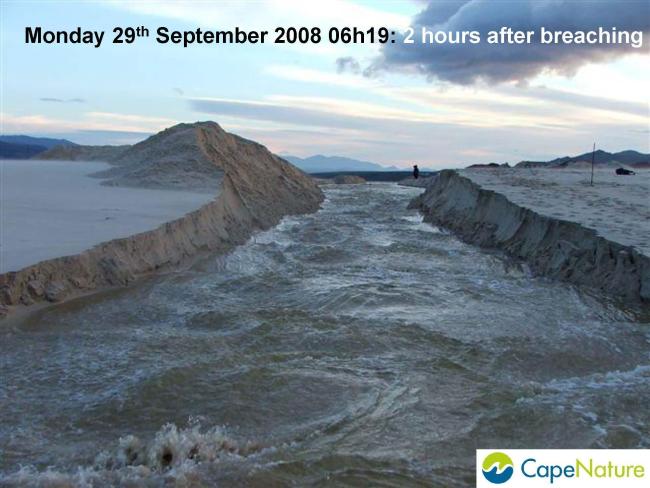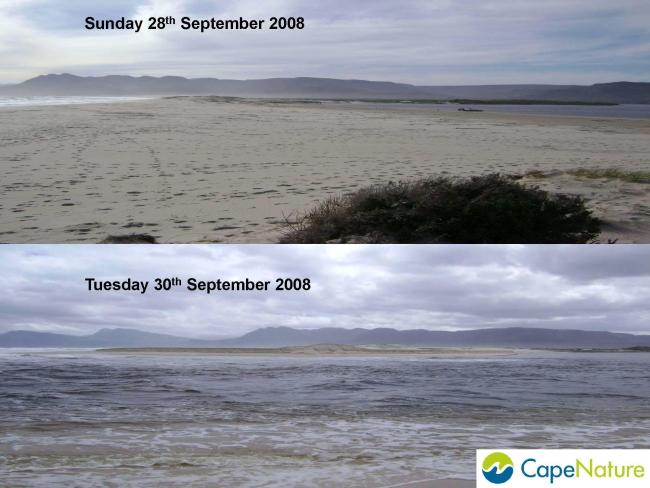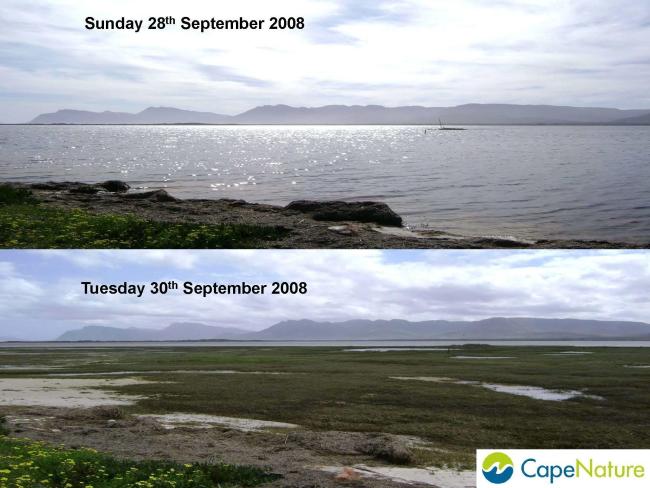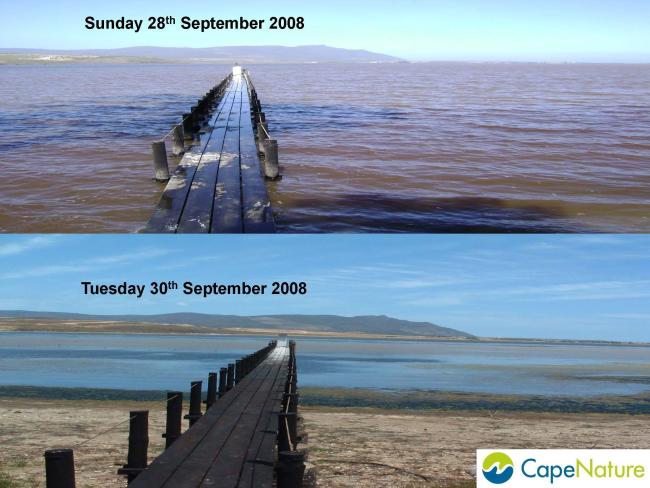Bot - Kleinmond Estuarine System
Bot - Kleinmond Estuarine System
- Country:
- South Africa
- Site number:
- 2291
- Area:
- 1,349.8 ha
- Designation date:
- 31-01-2017
- Coordinates:
- 34°20'40"S 19°06'41"E
Carousel
CarouselMaterials presented on this website, particularly maps and territorial information, are as-is and as-available based on available data and do not imply the expression of any opinion whatsoever on the part of the Secretariat of the Ramsar Convention concerning the legal status of any country, territory, city or area, or of its authorities, or concerning the delimitation of its frontiers or boundaries.
The Bot-Kleinmond Estuarine System is in the coastal Southern African temperate area, within the Agulhas Bioregion. It consists of an estuarine lake, flanked by deeply weathered Bokkeveld shale terrain and mountains oriented perpendicular to the coastline. The Site is recognized as one of the ten most significant wetlands for waterbirds in South Africa during the dry summer months; 86 species of waterbird have been recorded there. The bird community changes markedly from year to year according to changes in the estuary conditions related to water levels and periodic breaches of the estuary mouth. Overall bird abundance is determined mainly by the presence or absence of red-knobbed coots (Fulica cristata) which can occur in extremely high numbers. The Site is also important as a nursery area for fish, with 41 species from 24 families recorded, of which 19 species are dependent on estuaries to complete their lifecycle. The surrounding communities of Kleinmond, Fisherhaven and Hawston have a close relationship with the Bot River estuary. Many residents and holidaymakers use the estuary for fishing, swimming and boating. Some invasive species (including the red-eyed wattle Acacia cyclops and the African clawed frog Xenopus laevis) have had major impacts.
Administrative region:
Western Cape Province
Global international designation:
- UNESCO Biosphere Reserve
- World Heritage site
National legal designation:
- Provincial Nature Reserve - Rooisand Nature Reserve
Last publication date:
21-03-2017
Ramsar Information Sheet (RIS)
- ZA2291RIS_1703_en.pdf
- ZA2291_map160926.pdf
- ZA2291_map170228.pdf
- ZA2291_taxo160906.pdf
- ZA2291_ECD160906..pdf
- ZA2291_descr160906.pdf
Site map
Additional reports and documents
Taxonomic lists of plant and animal species occurring in the site
A detailed Ecological Character Description (ECD)
A description of the site in a national or regional wetland inventory
Site management plan







